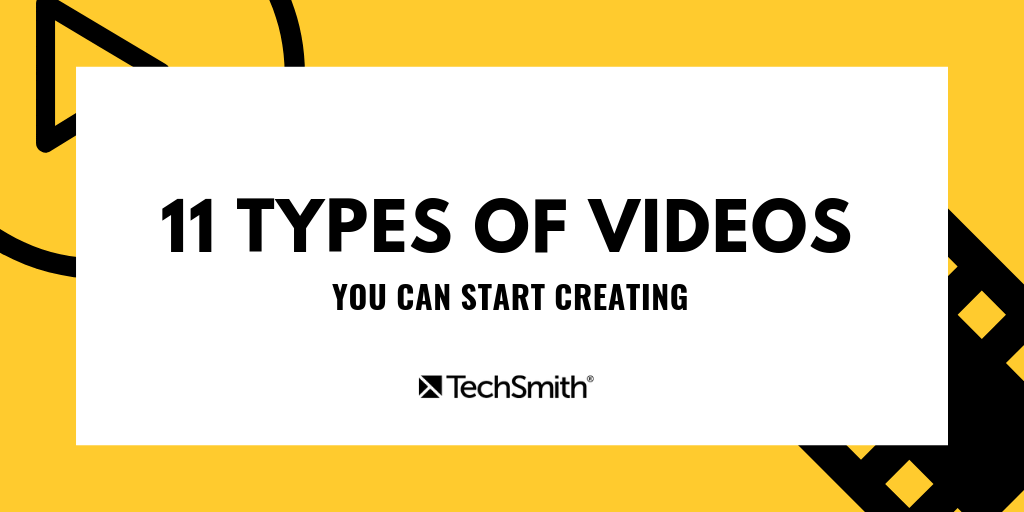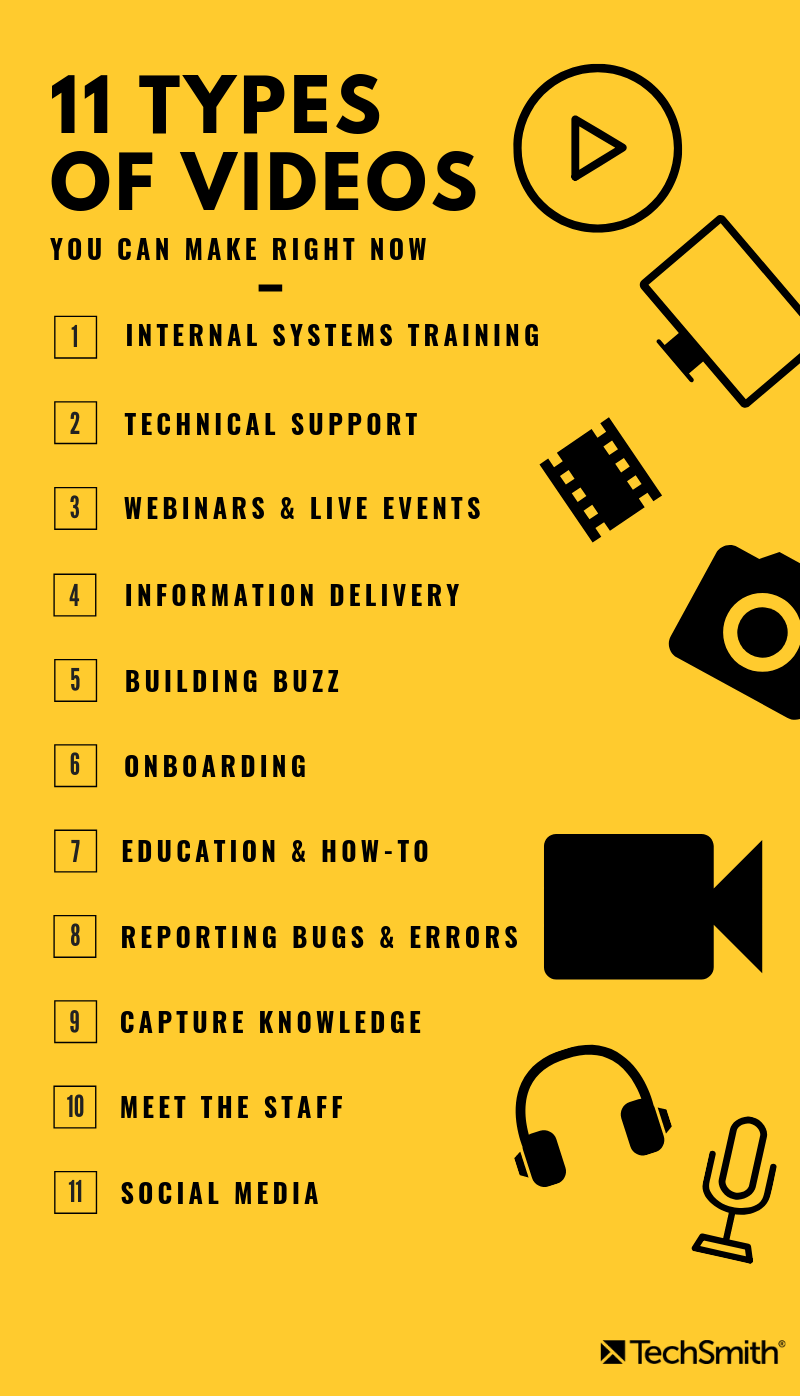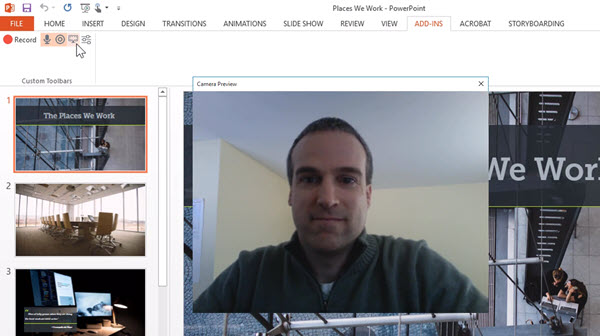Video is now one of the most popular ways to communicate, and video consumption and video creation are both on the rise. Let’s face it, people love video.
In fact…
- Six out of ten people prefer online video platforms to live TV
- There are over 1,000,000,000 mobile video views per day
- And 400 hours of video are uploaded to YouTube every minute!
The stats don’t lie. People everywhere are using video to share and find information. That’s why now is the perfect time for you to start using video.
If you haven’t started creating videos yet or haven’t made many, you’re in luck. We’ve put together some video suggestions for you to try because we know getting started can be hard.

In this post, we’ll walk you through different types of videos that may be helpful for you and fit your unique audience. But before we dive in, let me reassure you, video doesn’t have to be complex.
Please don’t let video intimidate you. There are lots of ways to use video to make your life easier, eliminate the need to repeat yourself, and help you get your point across.
Alright, now, I think we’re ready. Below you’ll find eleven types of videos you can start making today.

1. Internal Systems Training
Help your staff understand how a system works or how they can use it more effectively by providing an internal systems training video. This type of video is great for rolling out backend software, like a new analytics system. Record a quick screencast that you can easily share with members of your team or the entire company.
2. Technical Support
Showing is more effective than telling alone. Product videos are a great way to show your customers how to solve a problem. By creating a simple tutorial video, you’ll be able to provide above-and-beyond technical support. You can also use these videos to provide answers to frequently asked questions, creating easy, repeatable answers for customers. You can even repurpose these videos on your company’s FAQ page.
3. Webinars and Live Events
Record digital events you’re hosting to be able to share them with those who couldn’t attend live or to new audiences. You’re already creating the content, so why not repurpose it? If you’re not sure how, here’s how to easily record a webinar.

Many digital marketing teams are experimenting with live videos. In fact, Facebook Live videos can really boost your content marketing efforts. The best part is that these videos don’t have to be high-quality. They are a great way to create authentic video marketing content.
4. Information Delivery
Unlike training videos, information delivery may consist of giving an update, providing context, or explaining important information. This type of video is great for including in an email or for recording a presentation prior to a meeting you’re unable to attend in person.
By creating a video, you can narrate the information you’re sharing or use your webcam to give a personal touch instead of sharing with text alone.

5. Building Buzz
Create videos that get customers or staff excited about an event, an opportunity, or a product or service launch (like a demo video). These videos should be high-energy and exciting. They may have a higher production value than internal videos since you’ll be talking to an outside audience.
6. Onboarding
Onboarding videos are great for getting team members up to speed. You can create a video about anything from helping them figure out who’s who, to guidance on cultural values, or how to find the lunchroom. If you want to take your onboarding to the next level, you can even create a video library of corporate training videos for new employees to consume once they start.
7. Education or How-to Videos
Create educational video guides that provide support to certain roles or responsibilities. For example, you can make instructional videos that walk coworkers through a process only you know how to do.
You can also create an animated explainer video outside your organization to answer frequently asked questions. These animated videos help show potential customers what your
8. Reporting Bugs and Errors
Use video to capture errors or problems.
This is a great way to capture the context of the problem and to provide more detailed information. Using video to capture bugs and errors can also save time for the individual that has to fix the issue, by allowing them to see the exact steps leading up to the issue.
9. Capture Knowledge Before It Leaves the Organization
It can be expensive when an employee leaves an organization. Use video to capture key knowledge from employees before they go.
You can either invite them to record screen videos of key systems or interview them on camera. Looking for inspiration? See how Virgin Media used video to capture years of personal knowledge from 150 retiring colleagues with the help of TechSmith Snagit.
10. Meet the Staff
Create a who’s who of top leadership, or bring it down and have everyone make a quick introduction video, allowing your staff to get to know each other. This can especially be helpful for new employees to get to know the current employees, and vice versa.
11. Social Media
Social media video has stopping power. Movement is more visually prominent than still images. And images are more prominent than text.
That’s why video can be an awesome addition to your social media content mix. This could include live stream video, ads, how-to tutorials, and a variety of other types of video content to connect with and help your customers.
What’s Next?
Hopefully, one or more of these types of videos jumped out at you and you’re feeling inspired. If you’re ready to start creating one of these videos, but don’t know what tool to use, don’t worry—we can also help with that!
If you’re looking to record a quick screencast, let’s say for a quick how-to video or to report a bug to IT, TechSmith Snagit can help you. Try the free Snagit trial.
Or, TechSmith Camtasia is great if you’d like to create a more in-depth video with effects, captions, or transitions. You can also try Camtasia for free.
Good luck, and happy video creation!



Share